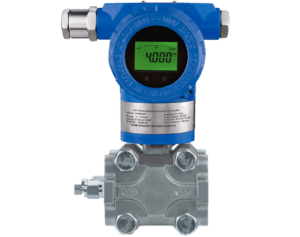Introduction:
Level transmitters play an important role in the entire process instrumentation ecosystem. They are used to measure and control fluid levels in a wide range of industries, including oil and gas, chemical processing, and wastewater management, among others. As a result, it is important for engineers and process instrumentation enthusiasts to have a good understanding of what level transmitters are, what types they are, and what they do.
In this step-by-step guide, we’ll dive into the level transmitter instruments, including their functions, types, calibrations, common issues, and practical applications.
Understanding Level Transmitter:
Definition and Basics:
A level transmitter (LT) is an integral part of process control systems. It is used to measure and transfer information on the level of fluids or solids in a tank or container. A level transmitter delivers real-time information, allowing for accurate monitoring and controlling of industrial processes.
Working Principles:
Level transmitters operate based on various principles, including hydrostatic pressure, ultrasonic waves, radar technology, and capacitance. Hydrostatic pressure transmitters measure the pressure exerted by the liquid column above them, while ultrasonic and radar transmitters use sound or electromagnetic waves to determine the distance to the liquid surface.

Types of Level Transmitters:
1. Hydrostatic Pressure Level Transmitters:
These transmitters measure liquid levels by determining the pressure exerted by the column of liquid. They are suitable for a wide range of applications and are particularly effective in situations where accuracy is crucial.
2. Ultrasonic Level Transmitters:
Ultrasonic level transmitters use sound waves to measure the distance from the sensor to the liquid surface. They are non-contact devices, making them ideal for applications involving corrosive or volatile liquids.
3. Radar Level Transmitters:
Radar level transmitters employ electromagnetic waves to gauge the distance to the liquid surface. They are versatile and effective in various industrial settings, providing accurate measurements even in challenging environments.
4. Capacitance Level Transmitters:
Capacitance level transmitters operate based on changes in capacitance between the sensor and the liquid. They are particularly useful in applications where the liquid may have low dielectric constants.

Calibration and Maintenance:
Calibration of level transmitters is essential for accurate and reliable measurement. Calibration helps to compensate for temperature variations, pressure variations, and process fluid properties. The calibration process can include zero and span adjustment, and it is common to follow manufacturer recommendations for best performance.
Level transmitters require regular maintenance to function optimally. This includes corrosion checks, sensor cleaning, electrical checks, and power supply checks. Regular maintenance not only improves accuracy, but also extends the life of the instruments.
Common Challenges in Level Transmitter Instrumentation:
1. Calibration Drift:
Over time, level transmitters may experience calibration drift due to factors such as changes in temperature, pressure, or the characteristics of the process fluid. Regular calibration checks and adjustments are necessary to maintain accuracy.
2. Contamination:
In applications with dirty or corrosive fluids, level transmitters can be prone to contamination. Regular cleaning and preventive measures, such as protective coatings or barriers, help mitigate the impact of contaminants.
3. Electrical Interference:
Electromagnetic interference from nearby equipment can affect the performance of level transmitters, especially those using radar or ultrasonic technology. Proper grounding and shielding are crucial to minimize the impact of electrical interference.
Real-World Applications:
1. Chemical Processing:
Level transmitters play a vital role in chemical processing industries where precise control of liquid levels is crucial for maintaining product quality and safety. They are used in storage tanks, reactors, and other vessels.
2. Oil and Gas:
In the oil and gas industry, level transmitters are employed for measuring levels in storage tanks, monitoring separators, and controlling processes to prevent overflow or underflow, ensuring efficient and safe operations.
3. Water Treatment:
Level transmitters are extensively used in water treatment plants to monitor water levels in reservoirs, tanks, and basins. They contribute to the efficient management of water resources and ensure compliance with environmental regulations.
Conclusion:
In the intricate landscape of industrial instrumentation, level transmitters stand as indispensable tools for ensuring precise and efficient control of liquid and solid levels.
From the principles of operation to the nuances of calibration, understanding the intricacies of level transmitter instrumentation is crucial for engineers, technicians, and anyone involved in process control systems.
As technology continues to advance, the future holds exciting possibilities for the evolution of level transmitter technology, further enhancing its capabilities across diverse industries.
Our You Tube Channel Our Face Book Page Home Page